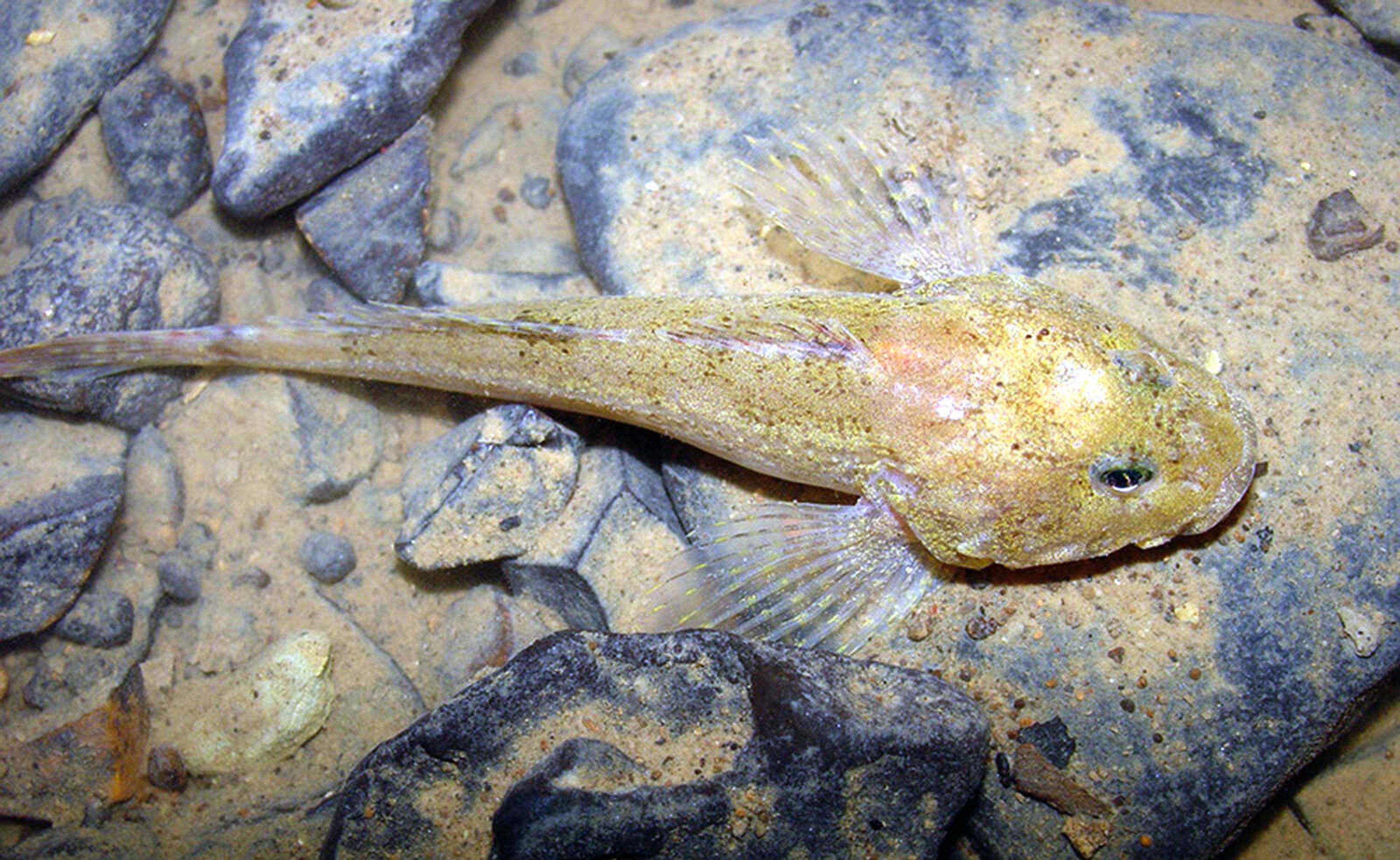Estimated cost of protecting fish falls within wide range
PERRYVILLE, Mo. -- Economists for the U.S. Fish and Wildlife Service have estimated that protecting the grotto sculpin, a small cave-dwelling fish in Perry County, could cost from $140,000 to $4 million during the next 18 years. The actual cost will depend on how existing efforts to protect it are valued, if the species becomes formally classified as endangered and if the area is designated a critical habitat...
PERRYVILLE, Mo. -- Economists for the U.S. Fish and Wildlife Service have estimated that protecting the grotto sculpin, a small cave-dwelling fish in Perry County, could cost from $140,000 to $4 million during the next 18 years.
The actual cost will depend on how existing efforts to protect it are valued, if the species becomes formally classified as endangered and if the area is designated a critical habitat.
The Fish and Wildlife Service will take comments through June 6 on a proposal to list the grotto sculpin as endangered, the associated economic analysis and a proactive community conservation plan developed by stakeholders to address potential habitat threats.
"The economic analysis considers economic impacts expected solely as a result of critical habitat designation, rather than as a result of 'baseline protections,'" said Laura Ragan, of the U.S. Fish and Wildlife Service Division of Endangered Species. Baseline protections are those associated with listing the species as "threatened" or "endangered" under the Endangered Species Act and are less rigorous than guidelines put into place when an area is designated "critical habitat," or essential to the survival of the species. The actual cost likely will fall somewhere between those numbers, she said.
Benefits of protecting the fish are more difficult, if not impossible, to translate into numbers, Ragan said.
"The published economics literature has documented that social welfare benefits can result from the conservation and recovery of endangered and threatened species. However, it may not be feasible to monetize, or even quantify, the benefits of environmental regulations due to absence of defensible, relevant research," Ragan said.
Perry County economic development director Scott Sattler said the estimated costs vary so widely because "they don't know what the impact's going to be." The plan is designed to capture every possibility, including existing efforts, and "doesn't really tell us anything because it is such a wide scope."
Sattler said he didn't think costly protections would be an issue because of a comprehensive conservation plan hundreds of community members developed during a six-month period and submitted last month. It is hoped the plan will stave off burdensome mandates.
The plan documents ongoing efforts to protect the environment that have occurred for decades because of unique features of the land. The city of Perryville already manages 400 sinkholes to prevent contamination and sediment from hurting the underground ecosystem. Fish and Wildlife Service biologists documented two mass die-offs in the cave systems in the last decade because of pollution from a single source entering groundwater.
"Perry County and the community have always been environmental stewards," Sattler said. "I feel we're sitting in a good position."
Perryville Mayor Debbie Gahan said the real costs are hard to quantify because the negative perception of the area by potential industry as having environmental issues can't be measured.
"We're going forward, but we'll never be able to tabulate what we might have had," Gahan said.
In a settlement agreement reached last September with the environmental group Wild Earth Guardians, the Fish and Wildlife Service evaluated 400 species, including the grotto sculpin, for possible addition to the endangered list, and opened a 60-day public comment period. The comment period was reopened so the public may provide further input.
"We encourage anyone to comment with relevant information that can help inform our decision and ensure that the information is as accurate as possible. We will consider all comments before we make a final determination," Ragan said. "The Secretary of the Department of Interior may, at her discretion, exclude areas from critical habitat based on economic costs if the benefits of exclusion outweigh the benefits of including those areas as critical habitat."
Gahan said she hopes the public will continue to be involved and will comment on the regulatory agency's plans.
"We need to continue to make people aware ... that we take this very seriously," Gahan said.
No public comments had been submitted as of Wednesday. Officials will meet today to outline the next steps and future public meetings will be conducted to update the public on the issue, Gahan said.
salderman@semissourian.com
388-3646
Pertinent address:
Perryville, Mo.
Connect with the Southeast Missourian Newsroom:
For corrections to this story or other insights for the editor, click here. To submit a letter to the editor, click here. To learn about the Southeast Missourian’s AI Policy, click here.











